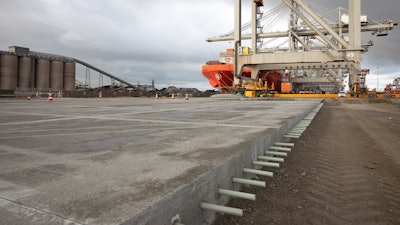Discovering the Advantages of Composites in Construction
Discovering the Advantages of Composites in Construction
Blog Article
Opening the Environmental Benefits of Recycled Composites in Building And Construction and Design
In the realm of building and layout, the use of recycled compounds holds significant assurance for improving sustainability practices and decreasing ecological impact. The change in the direction of an extra lasting future in these markets hinges on opening the complete potential of recycled compounds.

Ecological Influence Decrease
The reduction of environmental effect through making use of recycled composites in building and construction and layout plays an essential role in sustainable techniques. By incorporating recycled compounds into building materials, the building market can substantially lower its carbon impact and add to a much more environment-friendly future. These lasting materials, made from repurposed plastics, timber fibers, or various other recycled elements, provide a sensible alternative to typical construction materials without jeopardizing on high quality or toughness.
Recycled compounds assist draw away waste from landfills and minimize the need for removing resources, thus saving natural resources. Furthermore, the production process of these compounds commonly takes in less energy and emits less greenhouse gases contrasted to producing virgin materials (composites). This change towards utilizing recycled composites not only reduces ecological harm yet also promotes a circular economy by urging the reuse of materials that would or else be thrown out
Waste Minimization
With a focus on minimizing waste in building and construction and style, the combination of recycled compounds provides a sustainable option to lower environmental impact. Waste minimization is a critical facet of sustainable methods, and making use of recycled compounds provides a chance to attain this objective efficiently. By utilizing materials that have actually currently served their initial purpose, such as recycled plastics or recovered timber fibers, the building and layout markets can significantly lower the amount of waste produced and sent out to landfills.
Recycled composites have the potential to divert considerable quantities of waste from typical disposal techniques, contributing to a much more circular economy where resources are used efficiently. Furthermore, the manufacturing procedure of recycled compounds usually consumes much less power and generates fewer emissions compared to virgin products, additionally reducing the ecological footprint of building and construction and design tasks.
Executing waste minimization methods through the unification of recycled compounds not just assists in conserving natural deposits yet also promotes an extra lasting strategy to building and developing for a greener future.
Energy Preservation
Incorporating recycled composites not just decreases waste in building and construction and layout but also plays an important role in boosting power preservation practices within the industry. Using recycled compounds in building and construction can substantially contribute to energy conservation via numerous ways. To start with, the production of virgin products generally needs significant energy inputs, whereas making use of recycled composites eats less power, therefore minimizing general power consumption. In addition, incorporating recycled compounds can contribute to better insulation properties in structures, minimizing the demand for extreme home heating or cooling, and consequently decreasing energy use for environment control. Moreover, the lightweight nature of several recycled compounds can lead to lighter structures, calling for much less energy for transport and installation. By advertising making use of recycled composites in building and style, the sector can make significant strides in the direction of achieving power effectiveness and minimizing its carbon impact, inevitably contributing to a more sustainable constructed environment.
Carbon Footprint Reduction
Enhancing sustainability techniques via the usage of recycled compounds in building and construction and style significantly minimizes the carbon impact of the market. By integrating recycled products into the production of compounds, the demand for virgin resources reduces, leading to lower energy intake and greenhouse gas discharges connected with standard manufacturing procedures. This decrease in carbon impact is critical in combating climate change and advertising an extra ecologically pleasant method to building and layout.
The carbon impact reduction Visit Your URL attained through the adoption of recycled compounds lines up with the worldwide press towards web link lasting methods and the reduction of commercial exhausts. Ultimately, by focusing on the integration of recycled compounds, the market can make significant strides in decreasing its carbon footprint and adding to a much more sustainable future.
Sustainable Future
The combination of recycled composites in building and layout not only addresses immediate ecological worries however additionally lays a solid structure for a sustainable future in the sector. By including recycled compounds into building products and products, the construction and layout fields can dramatically decrease their dependence on virgin resources, causing an extra round economic situation. This change towards sustainability is critical for minimizing the environmental impact of standard building practices, which often lead to high levels of waste generation and source depletion.

Final Thought
Finally, recycled composites use substantial ecological benefits in building and construction and style by decreasing ecological impact, minimizing waste, preserving energy, decreasing carbon footprint, and advertising a lasting future. Embracing the use of recycled composites can contribute to a more environmentally-friendly strategy to building and layout, inevitably causing a more lasting and greener future for all.
The decrease of environmental impact through the usage of recycled composites in building and layout plays an important function in lasting techniques.With a focus on lessening waste in building and construction and layout, the assimilation of recycled composites offers a sustainable solution to reduce environmental influence. By promoting the usage of recycled check my blog compounds in construction and layout, the sector can make considerable strides towards achieving power effectiveness and lowering its carbon footprint, eventually adding to a much more lasting constructed environment.

Report this page